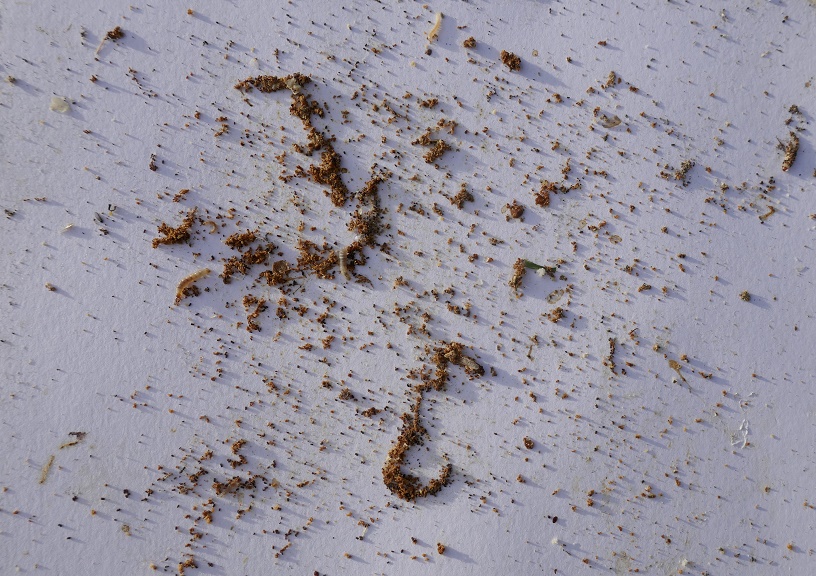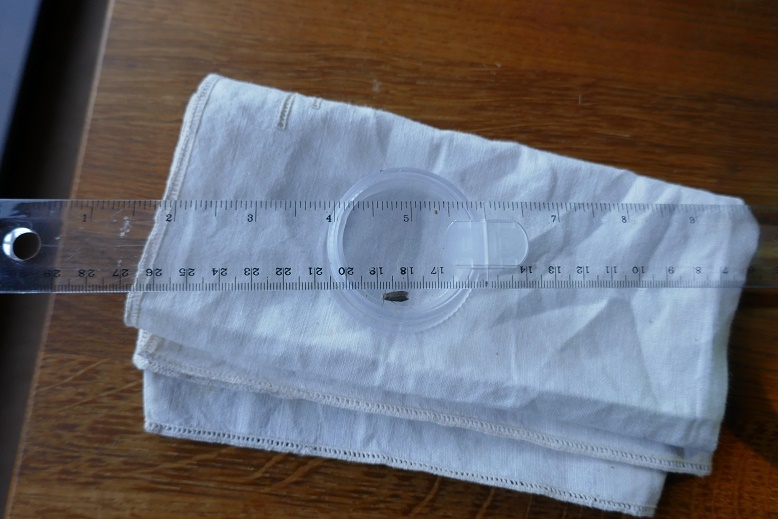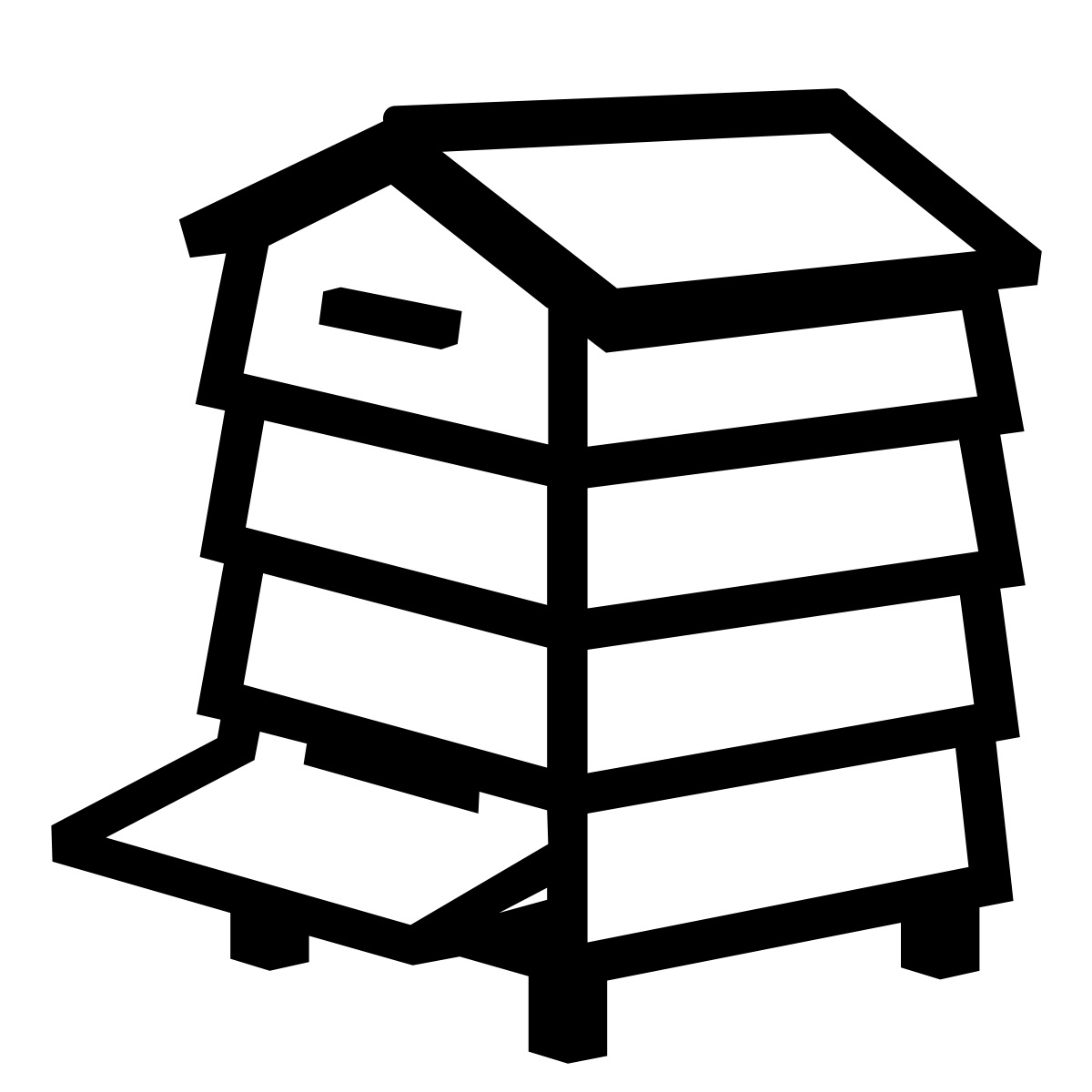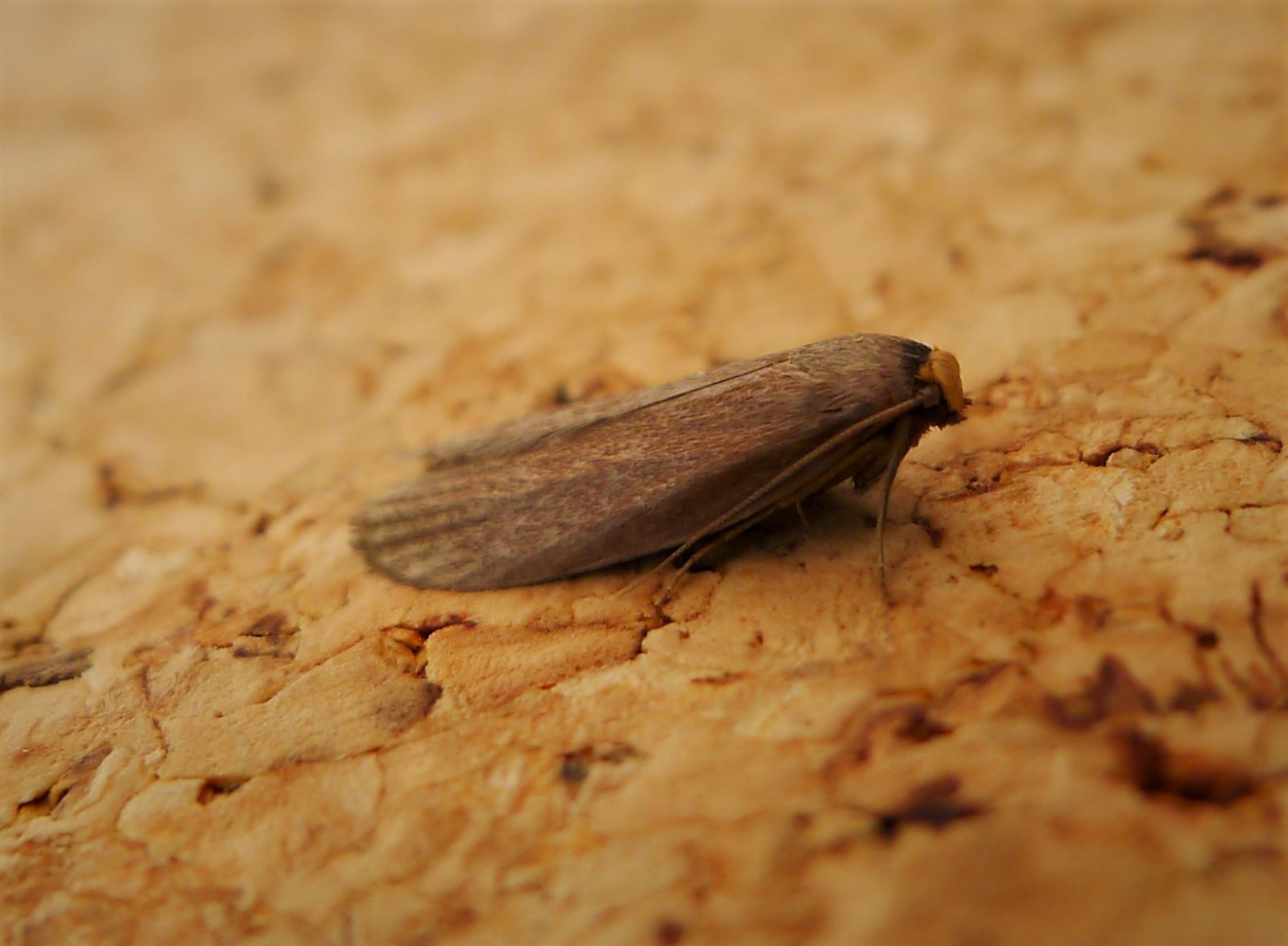
Minor Enemies of Honey Bees.
Lesser wax moths are insects of the Lepidoptera order belonging to the Pyralidae family. The’re closely related to another nuisance moth the greater wax moth, Galleria mellonella. The latter does far more damage though and, as the first name suggests, they make galleries among the brood combs tunnelling in and and leaving trails of silken threads that entangle emerging honey bee brood. They feed on wax combs, honey, pollen larval skins. They don’t actually digest the wax but get nutrients from the impurities. The caterpillars or larvae are the ones that wreak havoc in the hive by chewing up woodwork to make cradles for their cocoons. Adult moths have no mouthparts and don’t feed after emergence from their cocoons. Adults live from one day to a month at most. They hang about in trees and mate there. The greater wax moth female flies down to lay eggs in hive woodwork and crevises where the bees cannot find them. Lesser wax moths often lay eggs on the varroa floor inserts which is where I found mine recently.

Lesser Wax Moths.
The good news is that Lesser wax moths are less prevalent and don’t usually do much more damage than a bit of tunneling under the surface of the combs. This is why beekeepers sometimes store cut comb in the freezer to kill off the moth larvae. However, they can get into stored supers and make a mess with tunnels and faeces in combs. If frames are stored wet with honey wax moths don’t go into them. I usually store mine dry in airtight containers. I’ve never had any trouble from either moth. I do keep strong colonies at all times and that helps keep them away.

Watching Development.
I found the lesser wax moth larvae on 5/12/19 and put them in my observation jar with magnifying lid. I kept it on my desk and watched closely. Their development time might have been shorter indoors as it varies in different temperatures. I didn’t see any eggs, but usually around 250-300 are laid by this moth and they hatch after 5-8 days. After 32 days, the larvae began pupating on 16th January and completed that stage 24 hours later. Finally, on 1st February the first moth emerged. It scuttled about quickly but I prevented it flying off by freezing it for a couple of hours so that I could preserve and use it for teaching purposes. Curious to learn more about the development of the second pupa, I dissected the cocoon and looked at the chrysalis under the dissecting microscope. It was yellow/caramel coloured and I could see the wing outline inside. I removed it from the cocoon to watch further development.


4 Days Later.
The crysalis started to turn very dark near the head, and gradually the whole thing was nearly black. I feared that it might have died till I noticed the tail end twitch. So, I took off the lid and settled myself down to watch proceedings. Then the phone went and I got involved in a conversation completely forgetting the crysalis. The jar was empty when I put the phone down but I found the second moth unfurling its wings among my paperwork. It was small like the first one so I believe them to be males around 10mm long. Females are 12-14mm long.
What to do about wax moths.
These are some strategies to avoid conflict with wax moths: keep colonies strong at all times; maintain good apiary hygiene and change frames regularily; fumigate hive equipment and frames using 80% ethanoic acid as required; use a good biological control such as Certan (B401), and if there is a long spell of hard frosts in winter put frames and equipment outside overnight to kill wax moths. There are health risks around using enthanoic acid so please refer to BeeBase for guidelines if you haven’t used it before. You will find lots of other useful information on BeeBase such as how to do a Bailey comb change and many other procedures: https://secure.fera.defra.gov.uk/beebase/index.cfm .
Some good things about wax moths.
You can use greater wax moth larvae as fishing bait. In the wild, wax moths can be useful at clearing up nest debris and reducing infection among wild colonies. When wax moths first arrived in New Zealand there was a noticable decline in the number of American foulbrood cases there. Recent scientific discovery shows that greater wax moths are able to digest plastic, so perhaps there may be further development there to cope with environmental issues. Here’s a link to the research and a video of wax moth larvae eating their way out of a plastic bag: https://www.youtube.com/watch?v=4HLYfOEdEFA


If only these moths could be channeled into destroying plastic but wouldn’t their faeces somehow still contain the unwanted materials and maintain the problem that we have on our planet with plastic materials.
Not being at all scientific , I really can’t imagine how you would ensure “positive” behaviour from these insects, rather than “destructive” behaviour. My view is simply that you cannot ensure one sort of behaviour without the other. But that is a view from one, not in the least scientific or learned in that field.
I understand that plastic is digested by wax moths so they must have some powerful gut enzyme to do this job. No, it may not be the answer to the overall environmental problem of plastics, but maybe some other discovery will come about as a result of this. Watch this, https://www.youtube.com/watch?v=4HLYfOEdEFA. The original research reference is given at the end of the video.